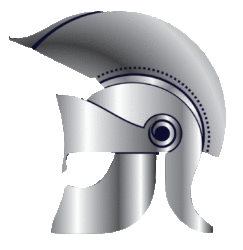Using LIFO, because the $6 crystals were the last inventory items added before the customer’s purchase on January 20, they are the first ones sold. Inventory valuation is determined by attaching a specific value to the products that remain in inventory at the end of the accounting period. Consider a fashion retailer such as Zara, which operates on a seasonal schedule. Because of the fast fashion nature of turnover, Zara, like other fashion retailers is under pressure to sell inventory rapidly.
The main advantage of inventory accounting is to have an accurate representation of the company’s financial health. However, there are some additional advantages to keeping track of the value of items through their respective production stages. Namely, inventory accounting allows businesses to assess where they may be able to increase profit margins on a product at a particular place in that product’s cycle. When goods are sold, properly record the transactions and ensure that the correct items are billed and shipped to customers. Record sales in the sales operating account with the appropriate sales object code.
- By rearranging the calculation, you would subtract Closing inventory from the Cost of goods available for sale to get your COGS, which will equal $3,600.
- Conversely, when there are many interchangeable items, cost formulas – first-in, first-out (FIFO) or weighted-average cost – may be used.
- However, revenue collection agencies do not need to know the specific inventory items, but rather the costs of goods sold and net income, which are both calculated using the inventory balance.
- Cooperation among employees is a common problem of the inventory management team.
Understanding how inventory in accounting works will help business owners like yourself effectively manage stock and overcome potential challenges. Unlike IAS 2, in our experience with the retail inventory method under US GAAP, markdowns are recorded as a direct reduction of the carrying amount of inventory and are permanent. There is no requirement to periodically adjust the retail inventory carrying amount to the amount determined https://intuit-payroll.org/ under a cost formula. Instead of tying up money in slow-moving stock, you can keep it as cash and use it for more productive things like paying down debt or improving the business. Inventory has a value – even before you do anything with it – and so it’s listed as an asset on your business balance sheet. But it can lose its value fast if it gets old, out of date, damaged, or the market price for that type of product drops.
Inventory valuation is essential for businesses to price their items and get an overview of their company’s financial health. Managing inventory also involves accounting, which can make the task more challenging. In accounting, the cost of sales of finished goods is categorized under the short-term assets section of the balance sheet. Work in progress, or WIP, is an inventory of partially finished goods still in line for completion. This category refers to raw materials, overhead costs, and labor of products in the different stages of production.
LIFO Method
It is defined as the array of goods used in production or finished goods held by a company during its normal course of business. There are three general categories of inventory, including raw materials (any supplies that are used to produce finished goods), work-in-progress (WIP), and finished goods or those that are ready for sale. Retailers typically only list one type of merchandise on their balance sheet where as manufacturers tend to list the three different categories of inventory separately. It all comes down to your inventory accounting methods, and the systems you put in place. That means keeping accurate and up-to-date financial records for business management purposes and tax return filing.
Deloitte comment letter on tentative agenda decision on costs necessary to sell inventories
Below is an example from Proctor & Gamble’s 2022 annual report (10-K) which shows a breakdown of its inventory by component. In fiscal 2022, P&G had materials and supplies (raw materials) of approximately $2.2 billion, work in process of $856 million, and finished goods of $3.9 billion. The ending balance of inventory for a period depends on the volume of sales a company makes in each period. The typical production facility has a large amount of overhead costs, which must be allocated to the units produced in a reporting period. Because we’re using the FIFO method, our order includes the first crystals that were placed in stock, which were $4 each.
Take your learning and productivity to the next level with our Premium Templates. The Ascent is a Motley Fool service that rates and reviews essential products for your everyday money matters. Charlene Rhinehart is a CPA , CFE, chair of an Illinois CPA Society committee, and has a degree in accounting and finance from DePaul University.
Estimate Ending Inventory
Inventory is the total of raw materials, work in process (WIP), finished goods and merchandise purchases that a business holds for sale in the ordinary course of business. The important point to remember here is that the goods are intended for sale. The Weighted Average method is often used in businesses where inventory items are so intermingled that merchant service website1 it becomes difficult to assign a specific cost to an individual unit. Inventory is the lifeblood of a business, crucial not just in operations but also in financial accounting. But what exactly does inventory mean in accounting terms, and how is it recorded? This blog aims to serve as a comprehensive guide to understanding inventory in accounting.
When a business sells its inventory, the accounting entry involves reducing the inventory account with a credit and recognizing the corresponding expense, COGS, with a debit. This way, inventory starts as an asset and becomes an expense only when it directly contributes to generating revenue. Since it plays such a critical role in a business, effective inventory management is crucial. Businesses need to strike a balance between holding too much inventory, which increases costs, and holding too little, which can lead to lost sales. One of the most common problems of inventory management is inconsistent tracking.
The lack of control fails to give you the full picture of inventory levels, leading to problems such as overstocking or stockouts. Managing involves coordinating the supply chains and overseeing product purchases. You should also maintain inventory levels and control sales to meet customer demands. Unlike IAS 2, US GAAP does not allow asset retirement obligation costs incurred as a consequence of the production of inventory in a particular period to be a part of the cost of inventory.
Company management, analysts, and investors can use a company’s inventory turnover to determine how many times it sells its products over a certain period of time. Inventory turnover can indicate whether a company has too much or too little inventory on hand. As noted above, inventory is classified as a current asset on a company’s balance sheet, and it serves as a buffer between manufacturing and order fulfillment. When an inventory item is sold, its carrying cost transfers to the cost of goods sold (COGS) category on the income statement.
Improvements to existing International Accounting Standards (2001-
These are the finished products that can be sold to wholesalers, retailers, or even the end users. Chartered accountant Michael Brown is the founder and CEO of Double Entry Bookkeeping. He has worked as an accountant and consultant for more than 25 years and has built financial models for all types of industries. He has been the CFO or controller of both small and medium sized companies and has run small businesses of his own.
Yes, simply put, all businesses must report their inventory to their country’s revenue collection agency. However, revenue collection agencies do not need to know the specific inventory items, but rather the costs of goods sold and net income, which are both calculated using the inventory balance. Generally, units should have an inventory accounting system that tracks purchases and sales of the units’ inventory and allows units to calculate cost of goods sold, which must be transferred to the operating account. Inventory purchases are recorded on the operating account with an Inventory object code, and sales are recorded on the operating account with the appropriate sales object code. A cost-of-goods-sold transaction is used to transfer the cost of goods sold to the operating account. The weighted average method, or average cost method, deals with inventory utterly different from the FIFO and LIFO methods.
Work-in-progress inventory is the partially finished goods waiting for completion and resale. A half-assembled airliner or a partially completed yacht is often considered to be a work-in-process inventory. The net change in inventories during Year 0 was zero, as the reductions were offset by the purchases of new raw materials. Generally speaking, the four different types of inventories are raw materials, work-in-progress, finished goods (available-for-sale), and maintenance, repair, and operating supplies (MRO). Good inventory management is what sets successful retailers apart from unsuccessful ones. Controlling purchasing and evaluating turns helps management understand what they need to stock and what they need to get rid of.
He has been a manager and an auditor with Deloitte, a big 4 accountancy firm, and holds a degree from Loughborough University. Beginning inventory is the goods unsold at the start of the accounting period, and ending inventory is the goods unsold at the end of the accounting period. In this example, your original inventory of $1,000 reduces by the $300 COGS, leaving you with a remaining inventory valued at $700.


